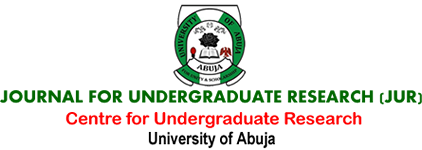A Novel Technique for Determining Handedness in Primary School Children
in FCT Abuja, Nigeria.
Author(s) : Okonkwo, Ebuka Heritage & Yalma, Ramsey Msheliza
ABSTRACT:
Handedness is the tendency to be more skilled and comfortable using one hand instead of the other for tasks such as writing and throwing objects. Society expects that most people should be right-handed but some are not. About 10-12.2% of Nigerians are left-handed. In certain cultures, people think that it is abnormal to be left-handed. It is therefore important to identify lefthanders in the population, support them and devise some methods of minimizing wrong social perceptions on the issue. A Descriptive Cross-sectional survey was utilized in this study. The population of this study were 190 primary school children between the ages of 5 -12 years selected from both a public and private school in Gwagwalada, Abuja after securing parental consent. Data was collected via direct observation and with the aid of a short questionnaire survey. The participants' pattern of “arm crossing”, “hand clasping” and “feet crossing” were observed. Their hand preferences for performing certain tasks as well as the time they spent writing or drawing with both hands were recorded. There was a significant relationship between the pattern of “Feet crossing” and the handedness of the participants. This shows that “Feet crossing” can be used to determine handedness. However, the test showed a low specificity despite exhibiting a high sensitivity. No significant relationship was found between the pattern of “Arm crossing” and “Hand crossing” and the handedness of the participants. Reported hand preference was an actual indicator of the subjectively perceived handedness of the participants.
KEYWORD(S):
Handedness, Children, Technique, Determining

